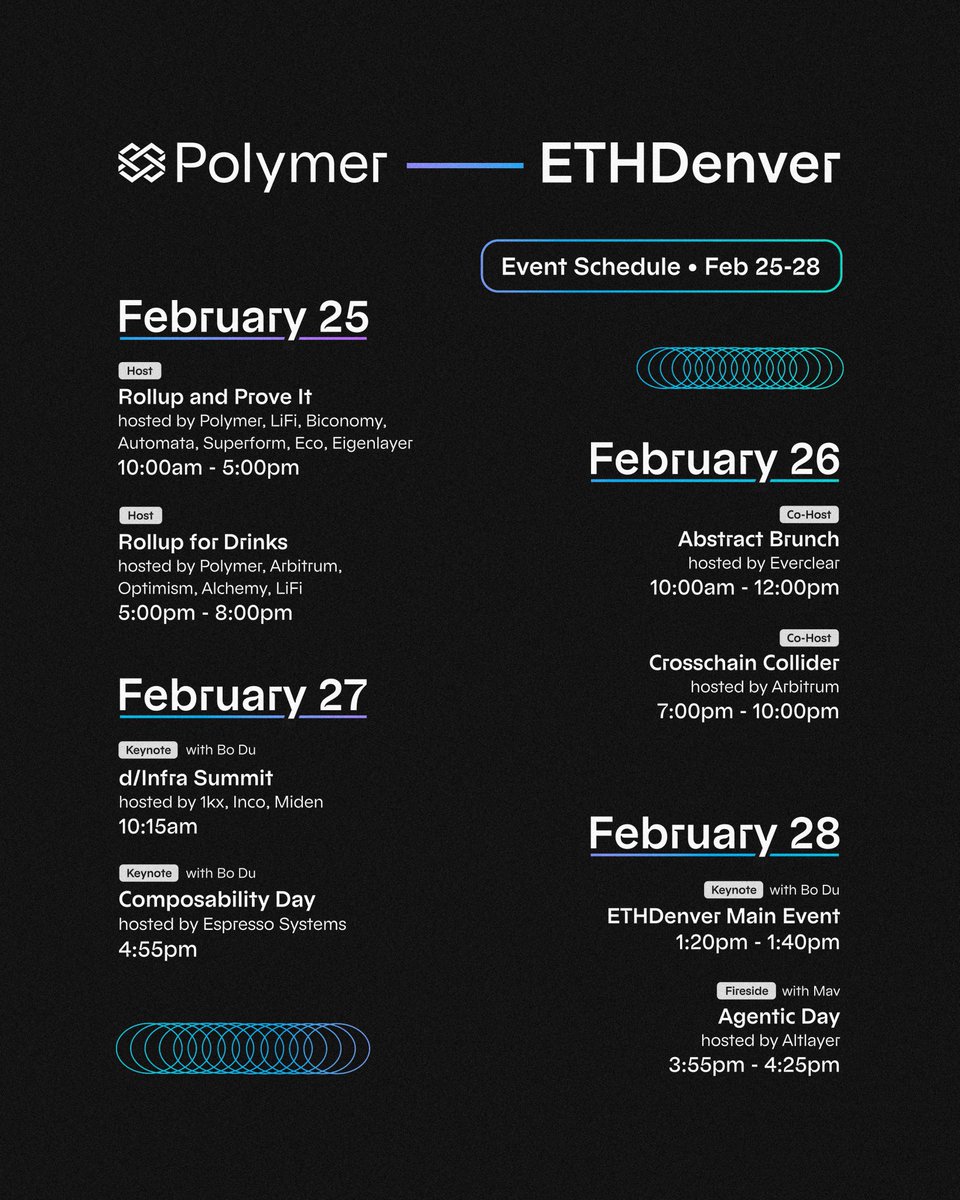
Ian Norden
@iansnorden
Biochemist turned programmer.
Research Engineer @Polymer_Labs
Previously @laconicnetwork
ID: 1024058552435003393
https://github.com/i-norden 30-07-2018 22:25:59
2,2K Tweet
1,1K Followers
1,1K Following




Rise and shine #ETHDenver2025 Catch our all-stars Peter Kim 🛜 Bo Du 🛜 PolymerUther Tommy 🛜 Mav 🛜 Ian Norden Liz Ralston at the following events👇🏻 Feb 25 Rollup & Prove It: lu.ma/506nul3h Rollup For Drinks: lu.ma/jga6vw7j Feb 26 Abstract Brunch:








Panel Announcement: Push or Pull for Interop 📣 Ian Norden, Christopher Goes & Ossi join Georgios to discuss whether the future of interop is push-based (message passing), pull-based (state reading), or something in between. Register now: lu.ma/vn99pm53



Our very own Ian Norden is representing Polymer at ZuBerlin – Futura Garden - Reach out to him to say hello!

Watch our own Ian Norden discuss a push vs pull development approach. Push models deliver real-time updates automatically at a higher cost, while Pull models respond on request with more control but added delay. Our Prove API balances both approaches to optimize for user


